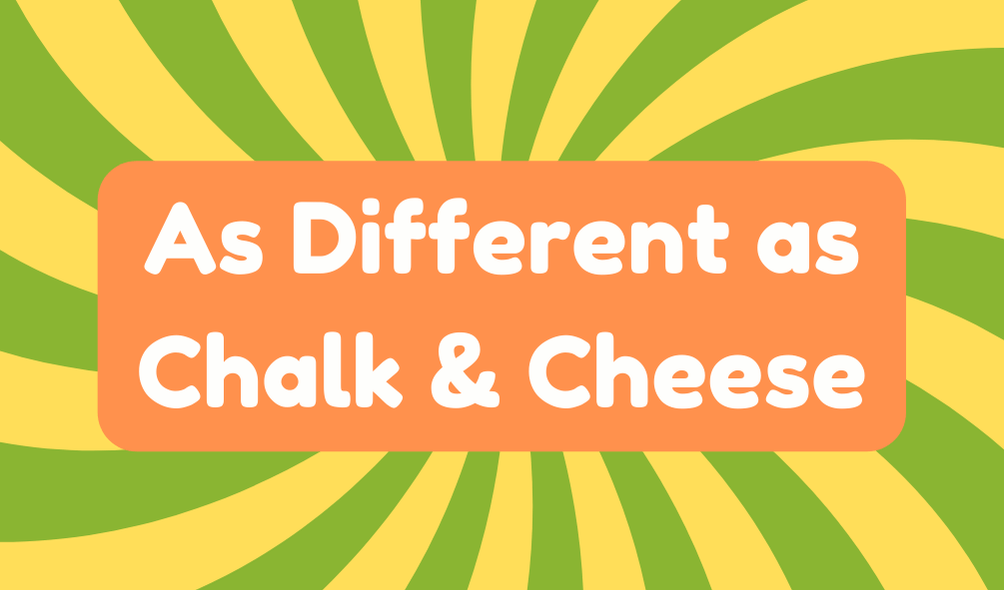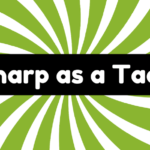The phrase "as different as chalk and cheese" is a vivid way to express stark contrasts between two people, ideas, or things. This expression highlights their fundamental dissimilarities, much like comparing polar opposites. It likely originated from medieval market practices, where vendors sometimes misrepresented products. While its usage remains popular today, some critics argue it oversimplifies complex differences. However, its relevance endures in discussions about varied perspectives, reflecting a world increasingly divided. Understanding such phrases enriches our communication skills and enhances our grasp of language. Explore further to uncover more nuances behind this common expression.
Synonyms
When discussing extreme contrasts, various synonyms capture the essence of differences akin to "as different as chalk and cheese." Phrases such as "like night and day" effectively denote clear distinctions between subjects, while "poles apart" emphasizes the significant distance in their differences. Such idiomatic expressions enrich our language but also challenge our understanding of antonyms exploration. Consider these alternatives:
- Worlds apart – signifies extreme dissimilarity in views or characteristics.
- Polar opposites – suggests complete contrary positions or traits.
- Apples and oranges – highlights incommensurable comparisons.
- Dissimilar as oil and water – further conveys the idea of incompatible elements.
These expressions, while colorful, often invite scrutiny, calling for deeper reflection on what contrasts truly mean in our analyses and discussions.
Example of Sentences
Vivid examples enhance our understanding of the phrase "as different as chalk and cheese." For instance, consider the contrasting hobbies of two friends; one prefers quiet evenings with novels, while the other thrives in vibrant social gatherings. Such examples underscore the notion of diverse interests and illustrate varying perspectives on enjoyment and engagement. The following sentences serve to exemplify this stark dissimilarity:
- Twins have interests as different as chalk and cheese.
- Tastes in classical music versus heavy metal demonstrate stark differences.
- Comparing introverts and extroverts resembles comparing chalk and cheese.
- The management styles of the company illustrate significant differences.
These sentences effectively highlight the reality of contrasting personalities and how personal choices reflect broader distinctions in human behavior.
Origin
The idiom "as different as chalk and cheese" has intriguing roots in medieval literature and market practices. The phrase likely emerged during a time when vendors would mix chalk with cheese to deceive customers, demonstrating a marked difference in quality. Its earliest recorded usage appears in John Gower's "Confessio Amantis" in 1393, showcasing its linguistic evolution over centuries. The alliterative nature of the phrase may have contributed to its catchy popularity.
| Aspect | Details |
|---|---|
| Medieval Usage | Originating from vendor deceptions |
| Historical Context | Found in Gower's literature |
| Modern Significance | Reflects stark contrasts in culture |
This idiom serves as a reminder of how language develops, highlighting both creative expression and the risks of misrepresentation.
Collocations
Collocations play a significant role in understanding the idiom "as different as chalk and cheese," as they highlight common phrases and contexts in which the expression is utilized. Recognizing how collocations are woven into literature and conversation can enhance our grasp of idiomatic expressions usage. Here are some notable collocations related to the phrase:
- Chalk and cheese comparisons – underscores contrasts effectively.
- As different as night and day – similarly emphasizes stark differences.
- Polar opposites debate – showcases varying perspectives in discussions.
- Worlds apart opinions – illustrates divergence in viewpoints profoundly.
How to Use in Everyday Language
When discussing subjects with stark differences, the idiom "as different as chalk and cheese" serves as an effective tool for clarity. This expression functions well in conversational usage, allowing individuals to articulate contrasts without ambiguity. In today's fast-paced communication environment, modern interpretations highlight its relevance; it can effortlessly illustrate disparities in interests, opinions, and approaches. When employed, it enhances understanding by clearly defining the lack of commonality between two subjects. However, users should exercise caution, as overreliance on idioms may dilute precise language. To maintain impact, consider balancing idiomatic expressions with straightforward descriptions. Ultimately, "as different as chalk and cheese" can enrich dialogue, yet its efficacy relies on thoughtful application rather than mere repetition.
Why Is It Still Relevant Today?
How does the idiom "as different as chalk and cheese" maintain its relevance in contemporary discourse? Its cultural significance endures as it continues to vividly express stark contrasts in an increasingly polarized world. As societal values evolve, so does the linguistic landscape, where this idiom serves as a handy tool to articulate differences. In our dialogue about innovation, social issues, and emerging perspectives, the phrase aptly encapsulates the essence of dissimilarities. Critics, however, may argue that its effectiveness diminishes amidst more nuanced expressions. Yet, as a straightforward descriptor, it remains essential. Engaging with this idiom fosters a recognition of complexity, encouraging thoughtful discourse, which validates its place in modern communication, bridging the gap between linguistic evolution and cultural expression.







